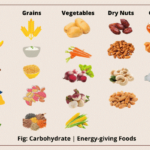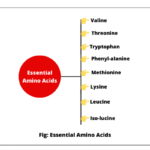Top 20 Union and Its Territory MCQ for Practice
Welcome to this Union and its Territory MCQ quiz. In this quiz, we’ve compiled the top 20 multiple-choice questions based on the Union and its Territory of India. These MCQ quizzes will test your knowledge and boost your preparation for UPSC, SSC, RRB, and State PCS exams. You’ll get a scorecard at the end of the quiz to check your performance.
So, are you ready to score 20/20? Let’s find out how well you really know the Union and its Territory of India. Let’s begin with question number 1.👇.
1. Article 1 to 4 of the Indian Constitution deals with which one of the following?
A. Citizenship
B. Fundamental Rights
C. Union and its Territory
D. Directive Principles of State Policy
c
Articles 1 to 4 of Indian Constitution deal with the Union and its Territory.
2. The number of Union Territories in India is —
A. 7
B. 8
C. 9
D. 10
b
After the merger of Dadra and Nagar Haveli with Daman and Diu in 2020, and the reorganization of Jammu & Kashmir in 2019, India has 8 Union Territories.
3. The total number of States and Union Territories in India is —
A. 35
B. 36
C. 37
D. 38
b
India has 28 States + 8 Union Territories = 36 total administrative units.
4. Which of the following Union Territories has a Legislative Assembly?
A. Delhi, Puducherry, Jammu & Kashmir
B. Chandigarh, Ladakh, Delhi
C. Lakshadweep, Puducherry, Andaman
D. Daman and Diu, Delhi, Chandigarh
a
The three Union Territories of India that have their own legislative assemblies and Chief Ministers are Delhi, Puducherry, and Jammu & Kashmir.
5. Which of the following is the largest Union Territory by area?
A. Andaman and Nicobar Islands
B. Jammu & Kashmir
C. Delhi
D. Ladakh
d
Ladakh is the largest UT (about 59,146 sq km).
6. Which of the following is the smallest Union Territory by area?
A. Chandigarh
B. Puducherry
C. Lakshadweep
D. Daman and Diu
c
Lakshadweep is the smallest UT (only 32 sq km).
7. Which two Union Territories were merged into one in 2020?
A. Andaman and Nicobar & Lakshadweep
B. Daman and Diu & Dadra and Nagar Haveli
C. Delhi & Chandigarh
D. Puducherry & Lakshadweep
b
Daman and Diu & Dadra and Nagar Haveli were merged on 26 January 2020 to form a single UT.
8. How many Articles are there under Part I of the Indian Constitution?
A. 2
B. 3
C. 4
D. 5
c
Part I of the Constitution (Articles 1 to 4) deals with the Union and its Territory.
9. Which Article of the Constitution empowers Parliament to form new States or alter the boundaries of existing States?
A. Article 2
B. Article 3
C. Article 4
D. Article 5
b
Article 3 empowers Parliament to form a new State, alter areas, boundaries, or names of existing States.
10. Which Schedule of the Constitution contains the list of States and Union Territories?
A. First Schedule
B. Second Schedule
C. Seventh Schedule
D. Tenth Schedule
a
The First Schedule contains the names of States and Union Territories and their territorial extent.
11. Which one of the following is the first state to have been formed on linguistic basis?
A. Andhra Pradesh
B. Maharashtra
C. Gujarat
D. Punjab
a
Andhra Pradesh was formed on Oct 1, 1953 on a linguistic basis from the Telugu-speaking areas of Madras State.
12. Which of the following States is a member of the “Seven Sisters”?
A. Sikkim
B. Meghalaya
C. West Bengal
D. Tripura
d
The term “Seven Sisters” refers to the seven northeastern States of India that are geographically connected and culturally similar. They are Arunachal Pradesh, Assam, Manipur, Meghalaya, Mizoram, Nagaland, and Tripura.
13. Sikkim was made an integral part of India under the —
A. 36th Constitutional Amendment Act, 1975
B. 35th Constitutional Amendment Act, 1974
C. 34th Constitutional Amendment Act, 1973
D. 37th Constitutional Amendment Act, 1976
a
Under the 36th Constitutional Amendment Act, 1975, Sikkim became the 22nd state of India.
14. The creation of a new state in India from an existing state involves the consent of the
- Supreme Court
- Legislature of the State Concerned
- President
- Parliament
Which of the statements are correct for the above statement?
A. 1, 2 and 3
B. 2, 3 and 4
C. 1 and 4
D. 1, 2, 3 and 4
b
The creation of a new state in India from an existing state involves the consent of the Parliament, President, and Legislature of State Concerned.
15. By which one of the following Constitutional Amendments has Delhi become the National Capital Territory (NCT)?
A. 63rd Amendment Act, 1989
B. 69th Amendment Act, 1991
C. 74th Amendment Act, 1992
D. 72nd Amendment Act, 1992
b
The 69th Constitutional Amendment Act, 1991, granted a special status to Delhi, re-designating it as the National Capital Territory (NCT) of Delhi. It provided Delhi with a Legislative Assembly and a Council of Ministers headed by a Chief Minister. A new Article 239AA was inserted in the Constitution to define the powers and structure of Delhi’s government.
16. The power to carve out (create) a new State in India is vested in —
A. President of India
B. Prime Minister of India
C. Parliament of India
D. State Legislature concerned
c
Under Article 3 of the Indian Constitution, only the Parliament has the power to form a new State, alter the boundaries, or change the name of existing States. The President must first refer the proposal to the concerned State Legislature for its views, but Parliament is not bound by those views. Hence, the final authority to create or reorganize States lies with Parliament.
17. The States of the Indian Union can be reorganized or their boundaries altered by —
A. An executive order of the Union Government with the consent of the concerned State Government.
B. The Union Parliament by a simple majority in the ordinary process of legislation.
C. Two-thirds majority of both the Houses of Parliament.
D. Two-thirds majority of both the Houses of Parliament and the consent of the concerned State Legislature.
b
Article 3 of the Indian Constitution empowers Parliament to create new States, alter boundaries, or change the names of existing States. A simple majority in both Houses of Parliament is sufficient; no special majority or consent of the State Legislature is required. However, the President must refer the proposal to the concerned State Legislature for its opinion.
18. The following States were created after 1960. Arrange them in ascending chronological order of their formation and choose your answer from the given options:
- Haryana
- Sikkim
- Nagaland
- Meghalaya
A. 3 – 4 – 1 – 2
B. 4 – 3 – 1 – 2
C. 3 – 1 – 4 – 2
D. 1 – 3 – 4 – 2
c
Ascending chronological order: Nagaland (1 December 1963) → Haryana (1 November 1966) → Meghalaya (21 January 1972) → Sikkim (16 May 1975)
19. Arrange these States in ascending order of their formation:
- Goa
- Arunachal Pradesh
- Mizoram
- Sikkim
A. 1 – 2 – 3 – 4
B. 1 – 3 – 2 – 4
C. 1 – 2 – 4 – 3
D. 2 – 1 – 3 – 4
a
Correct chronological order: Sikkim (16 May 1975) → Arunachal Pradesh (20 Feb 1987) → Mizoram (20 Feb 1987) → Goa (30 May 1987). Option A adjusted accordingly.
20. Before introducing a Bill for the reorganization of a State, the President must
A. Obtain approval from Parliament.
B. Refer it to the Supreme Court.
C. Refer it to the concerned State Legislature.
D. Conduct a national referendum.
c
Before introducing a bill for the reorganization of a State, the President must recommend the introduction of the bill and refer it to the legislature of the concerned State for its views within a specified period.
Quiz Results
Total Questions: 0
Correct Answers: 0
Incorrect Answers: 0
Score: 0%






